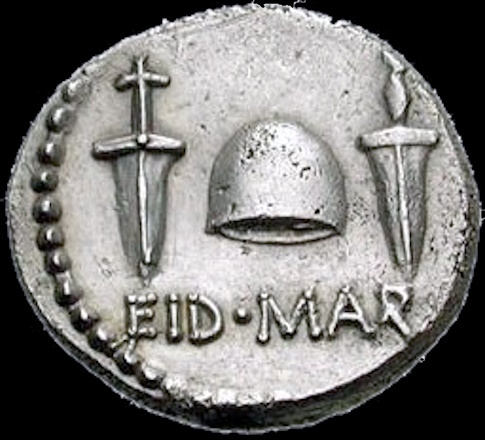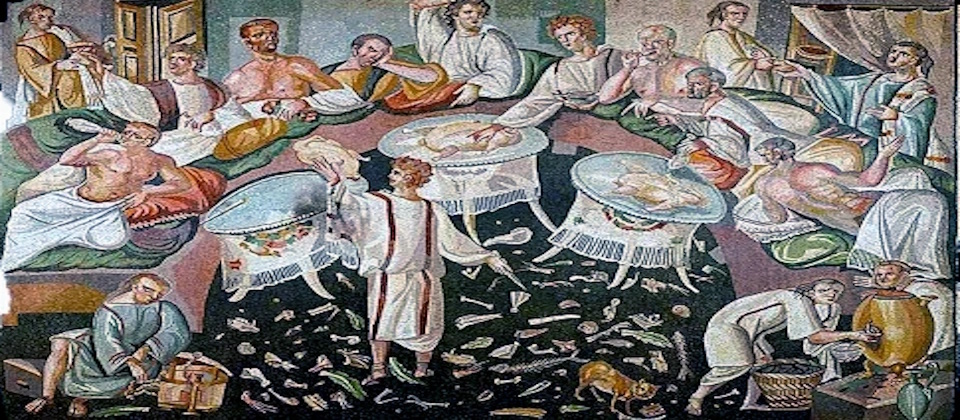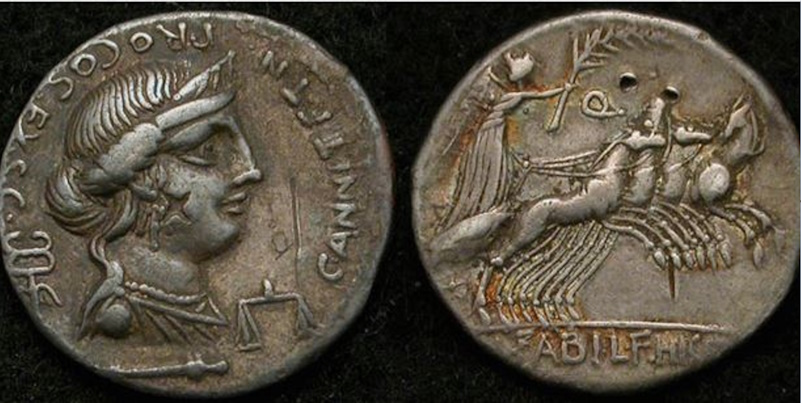15th March - Ides of March & Anna Perenna Goddess

Written by Anne Newman Thursday, 14 March 2019 updated 2024
In order to align the year with the solar cycle, Julius Caesar introduced the Julian calendar. 90 extra days were added in 46 B.C.
“Beware the Ides of March” has gained notoriety mainly thanks to the line from Shakespeare’s play Julius Caesar by Shakespeare - Act 1, scene 2. - where he ignores the warnings of a prophet and ends up being murdered, in 44 BC.
Caesar: Who is it in the crowd that calls on me? I hear a tongue shriller than all the music cry: "Caesar!" Speak, Caesar is turned to hear.
Soothsayer: Beware the Ides of March.
Caesar: What man is that?
Brutus: A soothsayer bids you beware the Ides of March.
--- oOo ---
The coin - reverse side - is an Eid Mar Denarius (issued by Marcus Junius Brutus) with the symbols of the murder of Gaius Julius Caesar: phrygian or liberty cap (symbolically given to slaves in obtaining their
freedom) with two daggers, and EID MAR (short for "Eidibus Martiis" – on the Ides of March).

The Ides of March still has an ominous tone to it, here are some of the reasons why:
- Czar Nicholas II abdicates his throne, 1917
On this day in 1917 Tzar Nicholas II of Russia signed his abdication papers and in doing so ended a 304-year-old royal dynasty and ushered in Bolshevik rule.
- Germany Occupies Czechoslovakia, 1939
On this day in 1939 Nazi troops seize the provinces of Bohemia and Moravia, effectively wiping Czechoslovakia off the map.
- 1952 the World’s heaviest rainfall
Rain falls on the Indian Ocean island of La Réunion— and keeps falling, hard enough to register the world’s most voluminous 24 hour rainfall: 73.62 inches.
But what is the Ides of March?
The Romans calculated the days of the month by counting back from three fixed points of the month:
- the Nones (5th or 7th, depending on the length of the month),
- the Ides (13th or15th),
- and the Kalends (1st of the following month).
The Ides occurred near the midpoint, on the 13th for most months, but on the 15th for March, May, July, and October. They were sacred to the god Jupiter and were also days of settling debts.

Anna Perenna
The Ides of March was also the Feast of Anne Perena, a goddess of the yearly cycle, whose festival originally concluded the ceremonies of the New Year. Anna means "to live through a year", while perenna means "last many years".
It was the legend that Anna Perenna was an old woman from the town of Bollivae in Latium who supplied bread and cakes to the plebeians (commoners / free citizens), saving them from starvation.
On the evening of the 15th, people would gather at the 1st milestone on the Via Flaminia in Her sacred grove of fruit trees (in bloom at that time of year) by the banks of the Tiber, and camp out, some bringing tents, others making little shelters from leafy tree branches. There they picnicked merrily into the night, feasting, dancing, singing, and celebrating with much wine, toasting to health and long life. It was believed that one would live as many years as the cups of wine one could drink, and so it was of course traditional therefore to get very, very drunk. This festival connected the old and the new; it is interesting to note that the Via Flaminia was famous for its tombs and cemeteries. Obscure Goddess Online Directory

--- oOo ---
Anne is sharing a series of events throughout the year - you can find them listed by clicking to the link Other Notable Dates and Festivals.





